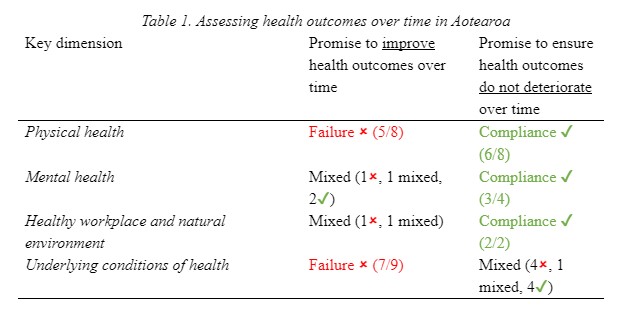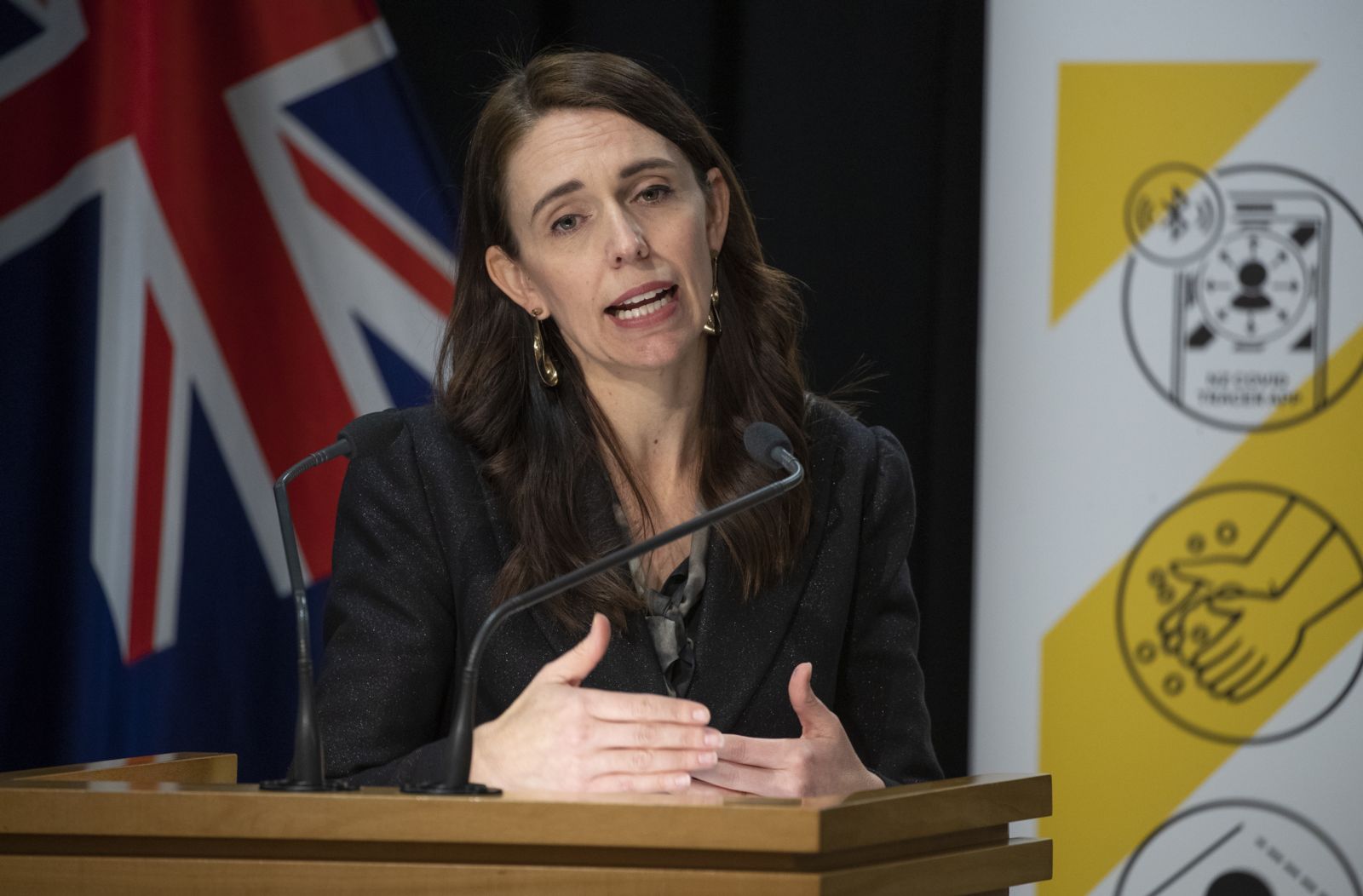The New Zealand government’s elimination response strategy for Covid-19 meant implementing aggressive measures to tackle the virus ‘hard and early’. While this strategy was initially successful, a survey by the Human Rights Measurement Initiative (HRMI) showed that as the New Zealand health system prioritised the response to Covid-19, other health needs were not adequately addressed and health care access was significantly delayed. New Zealand’s health system was not ready for a pandemic and it is easy to see why when looking at a recently published report showing that the right to health care and protection has not improved in the country since long before the pandemic.
In 2021, HRMI, hosted by the New Zealand economic research institute Motu, took a deep dive into the right to health care and protection in Aotearoa—the Māori name for New Zealand—to measure whether the New Zealand government is taking the necessary steps to fulfil its international human rights promises. A complimentary article on OpenGlobalRights shows this evaluation for the right to adequate housing in Aotearoa. Both these articles are based on research commissioned by the New Zealand Human Rights Commission.
Through signing international human rights treaties, the New Zealand government has made promises to ensure all available resources are used to improve everyone’ access to the right to health care and protection over time. The government has also committed to minimum core obligations for the right to health care and protection, which range from ensuring access to health facilities, basic shelter, and safe water, to providing minimum essential food to ensure freedom from hunger. These obligations highlight the fact that all economic and social rights are interconnected.
The report provides new methodologies for measuring whether the government is living up to five of its international human rights promises for the right to health care and protection. These methodologies are the same as those described in the OGR article on housing.
The New Zealand government is failing to fulfil all its promises for the right to health care and protection
Table 1 shows that while most health outcomes have not worsened in Aotearoa, many health outcomes have failed to improve over time for all people.
Of the 23 right to health outcomes that we can track over time, 14 have failed to improve and seven have deteriorated. Within physical health, the under-five mortality rate and the unmet need for dental health care have not improved, and the rate of rheumatic fever hospitalisations has worsened. Within underlying conditions of health, Aotearoa’s relative poverty rate has failed to improve, and the inflation-adjusted funding of Māori health providers per capita has decreased.
The two best performing indicators are within the mental health key dimension. Aotearoa’s suicide rate and the percentage of people who have experienced lifetime intimate partner violence have both decreased over time, meaning rights outcomes have improved.

Notes: For the promise to improve health outcomes over time, compliance is achieved if the majority of indicators have improved over time, a failure is concluded if the majority of indicators have deteriorated or stayed constant over time, and mixed evidence is concluded if the indicators show different results. For the promise to ensure health outcomes don’t deteriorate over time, compliance is achieved if the majority of indicators stay at least constant over time, a failure is concluded if the majority of indicators deteriorate over time, and mixed evidence is concluded if the indicators show different results.
Additionally, of the 20 health outcomes we can compare across population subgroups, 17 show breaches of the promise of non-discrimination. New Zealand’s current health care system makes achieving good right to health outcomes more difficult for Māori and Pacific Peoples, disabled people, women, those with low educational certification, and those who are not employed.
Urgent action is needed to improve health outcomes
After assessing the New Zealand government’s performance against each of their human rights promises, we now have a clear understanding of the many ways the government has allowed its health system to become stagnant. We can show the government where change is most urgently needed. A good place to start is addressing Aotearoa’s unmet need for primary and dental health care, high relative poverty rates, and high levels of food insecurity so further health problems can be prevented.
Overall, the report shows that human rights aren’t just aspirations, they are international commitments for which performance can be assessed. This type of research must be conducted to hold governments to account and ensure human rights are taken seriously.
Additionally, of the 20 health outcomes we can compare across population subgroups, 17 show breaches of the promise of non-discrimination.
This is particularly important during the pandemic. HRMI’s research shows that government Covid-19 measures often have a negative impact on human rights, particularly amongst those already vulnerable. Of the 39 countries surveyed, 65.4% of respondents said that Covid-19 had affected people’s enjoyment of the right to health. If a country prioritizes improving physical and mental health care and protection against underlying conditions of health for everyone, ensuring that disparities in access to health care are eliminated, they will be in a better position to respond to Covid-19 and prevent further harm and human rights violations.
Want to know how your country is performing?
Other countries can use the methodologies laid out in the report to empirically measure whether the government is meeting its human rights promises. In doing so, more governments can realise their failures and redirect their policy strategies sand resources to most efficiently improve human rights outcomes for everyone. Check out HRMI’s Rights Tracker to see how your country is keeping its human rights promises, including on the right to health care and protection. Also see HRMI’s Human Rights During the Pandemic report to learn how your government’s Covid-19 response has impacted human rights in your country.

